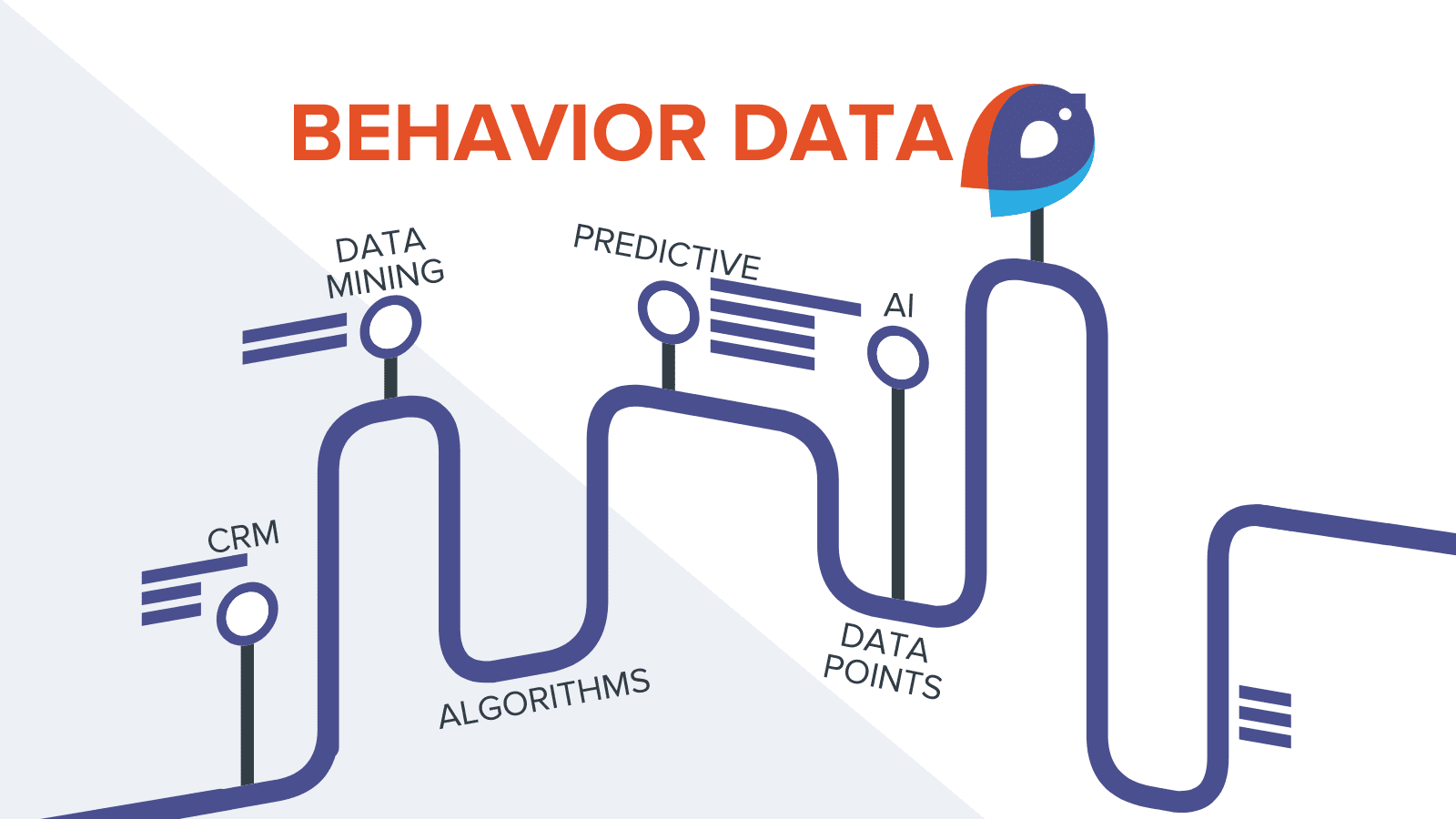To some, it may appear that 3 Birds has been late to the game as a big player in the modern technology landscape. And we may not be as well-known to many Tier 3 dealerships; as we've worked closely with a focused direct dealer-base, concentrated much of our efforts as as a leading digital data performance platform to every major OEM, and earned essential analytics partnerships to automotive's global consumer insights leader over the last 10 years. Initially, that may sound like a disadvantage; however, our unique vantage-point has allowed us to look much farther towards the horizon than most others.
We've gotten to take a front seat on the path of technology and have a bird's eye view of what's working...and what's not...within a lot of really great companies. We also have first-hand knowledge of how a consumer behaves, how to capture those behavioral analytics, and how to use it in behavior marketing. All that being said, what exactly IS the path of technology, where did it start, and were does it end?
Let's take a closer look at the timeline. We think our difference will become clear.

Most automotive dealers are admittedly a little behind in technology. It is not their fault. They only have access to what's available to them and what's the latest shiny object within the industry at any given time. We've been driving change from the middle of that road, too - always with our sights outside of automotive and crossing over when it makes sense. While it all started even before 3 Birds became the first Integrated Marketing Platform in automotive, we'll fast-forward to those relevant to today.
And make no mistake, we aren't downplaying the value of these methods. We actually use the best parts of them as part of our own marketing mix! But none of it is effective on its own. Each piece builds on the next to create a larger, more robust customer experience and data platform.
Predictive Tech
Modern predictive technology has been around since modern marketers have also been around. It encompasses a variety of statistical techniques from data mining, predictive modeling, and machine learning in an effort to accurately market to the customer. For instance, put all Toyota Camry owners into a predictive modeling machine and it will report that they are likely to purchase or trade for another Camry or similar model.
It's an estimated guess. And guess what. The majority of them are, in fact, looking for an entirely different make and model.
So why are we still guessing? Technology exists today that provides granular visibility into exactly what a person is interested in, where they have looked and what they have looked at online, and what they have clicked at any given moment. With this information, marketing can be delivered in real time that directly targets their unique needs and wants.
Would you rather guess...or know?
Algorithms
Next in what we are calling 'the path of technology' came algorithms; a sequence of instructions or a small procedure that solves a recurring problem. So we already have predictive technology and now algorithms can be applied to it. Boom! New technology, right? Actually, the combination of these two are about a decade old now.
Artificial Intelligence (AI)
AI can perform a task that normally requires human intelligence such as a visual perception, speech recognition, decision making, translation between languages, and even more as it continues to advance. It is a big innovation in the technology world and everyone claims to have it these days. Even so, how does it help dealers market and sell more cars?
Basically. it does the same thing as the previous technology. In simple terms, information is put into a machine that takes lots of data and combines predictive modeling and established algorithms to figure out where the customers are in their path to purchase, and automates the the marketing for you, seemingly taking all the hard work of analysis off your plate.
To be fair, AI has become extremely common in our world today and most organizations have some type of artificial or automated intelligence that brings in information and spits other information out. It's become a broad stroke solution. Yet this latest innovation still doesn't tell you where the customer is at in their customer lifecycle, let alone in real time. It doesn't tell you what they are looking at, where they have gone, or what you need to do now to retain their business.
It's artificial intelligence. Not business intelligence. And it doesn't allow the consumer to drive your marketing.
Data Points
Data points have recently been tossed around as the latest and greatest buzzword. Broken down, data points are just that - points of data; one element of identification in a data set. For example this could be a piece of information about age, income, assumption about wealth, a number of dependents, whether a person is married or divorced, and the list of points go on and on. This information is stored in a system that can quickly process tens of thousands of such data points. By the way, each data point is expensive and eats up more money the bigger the set you need to tell a bigger data story!
So here's the scenario: you take predictive technology, put an algorithm to it, dump it in your AI machine, and go purchase some additional data points to round out a profile. Data points can give you information you may not have already had, but a lot of what you are buying is irrelevant to making the sale. Your vendor will try to sell you 20 million data points - but do you really need 20 million more bits of information to sell a vehicle? It doesn't help market to your customer. It doesn't let the consumer drive the experience by responding to their purchase behavior. It simply can't.
Data points can help you obtain the lowest hanging fruit, and while that's valuable and we would never ignore the ability to use that information to market to that smaller portion of your database, you'll never capture the great majority of your best, most loyal customers not often found on the bottom branch.
The Difference
The attraction to all of the new technology described is clear and it's all completely valid. But there's an even newer kid in town. Technology that the automotive industry has not yet fully absorbed. The 3 Birds name might be late to the big game, but we're here now with the newest tech. All the really big names are already using it.
Behavior Data
We've been heard saying that behavioral technology is the holy grail of technology today. What's that even mean? Here's an example: You're shopping online at Amazon and the item you were just talking about not more than half an hour ago appears on your home screen! This technology is extremely prevalent outside the automotive industry. So much so that customers are becoming accustomed to it. Not only that, but they expect it.
Consumers want retail and service companies to make the experience all about them. If you can catch a customer while they are still in the ether of shopping, you can create a transaction or make a sale. Think about it. If you were to receive some type of marketing while still on the website, it would inevitably encourage you to act. Once you've closed the browser window and gone back to work. Once the window closes, the consumer is mentally done. They are no longer thinking about whatever it was they were just looking at and have moved on. You have to keep that line of communication open, keep engaging them to interact after the window close all the way through to the deal close.
Behavior data allows your dealership to do just that. To take all the data - all the things - and bring it all together. This information translates to marketing that is direct, personal, and influential.
Companies that use behavior data have 85% more profit than those who do not. Be the one that does!
3 Birds
The 3 Birds name may have stepped up quietly to the game, but we have a winning record in behavioral data. We've been allowed to take a step back and evaluate the landscape of automotive and apply this new technology to the industry. Our path has been an evolution in understanding how a consumer engages, how many times they have to see something, how they interact, and where they continue to go from there. There's no reason to guess anymore. Your dealership can be a winner, too.
We may have come late, but came to play with early technology. Let's set up some time to talk a bit more.

